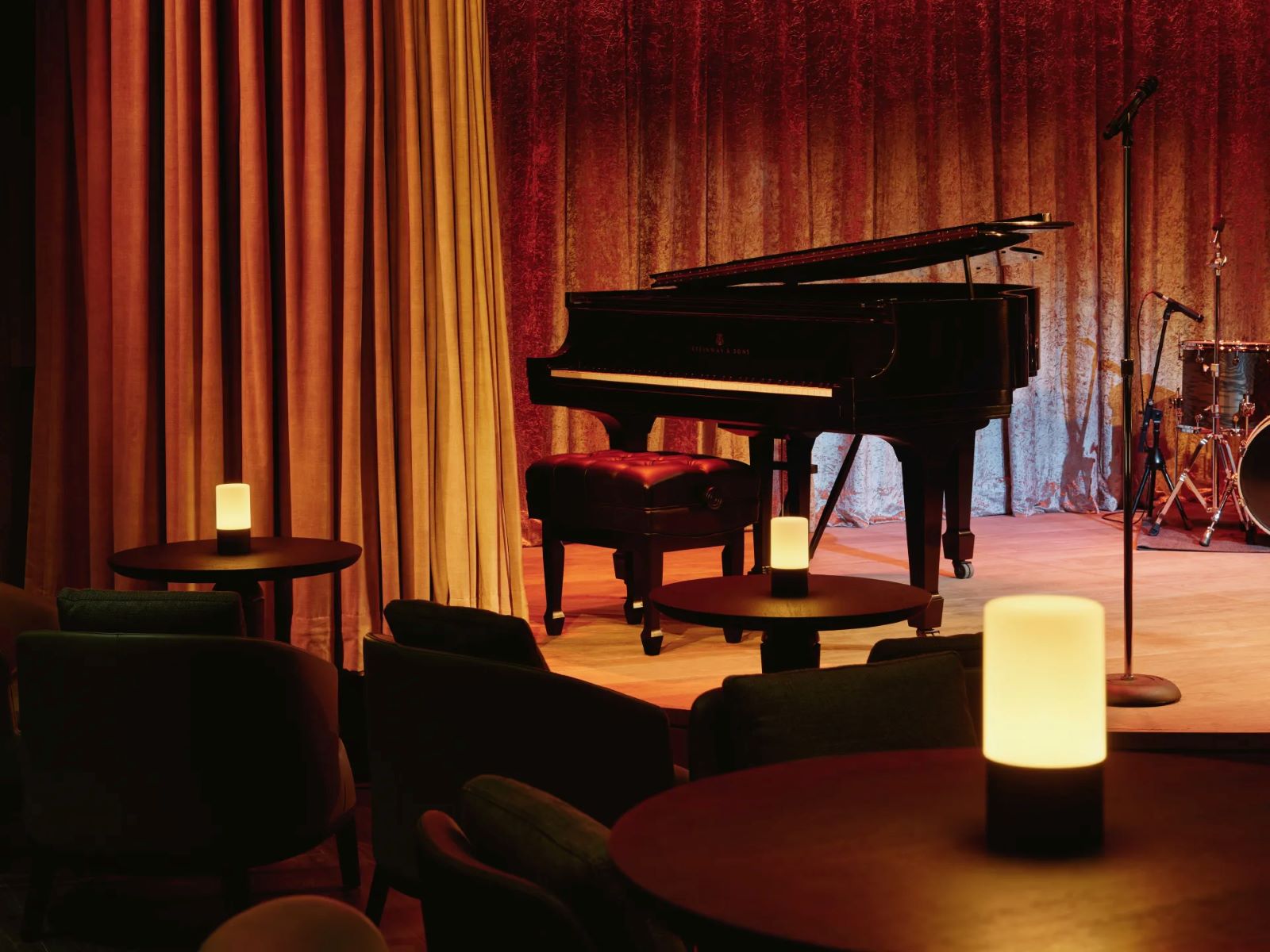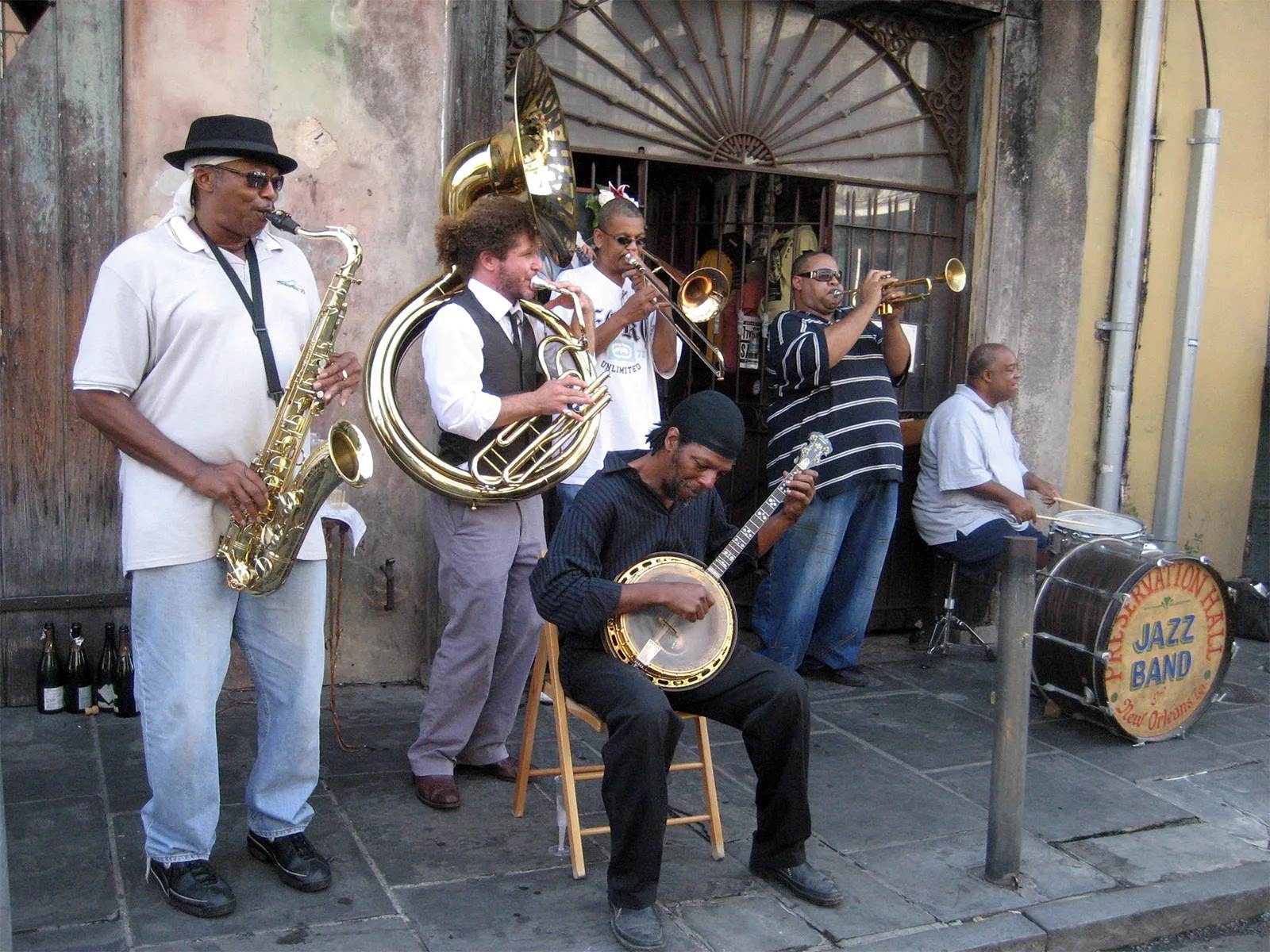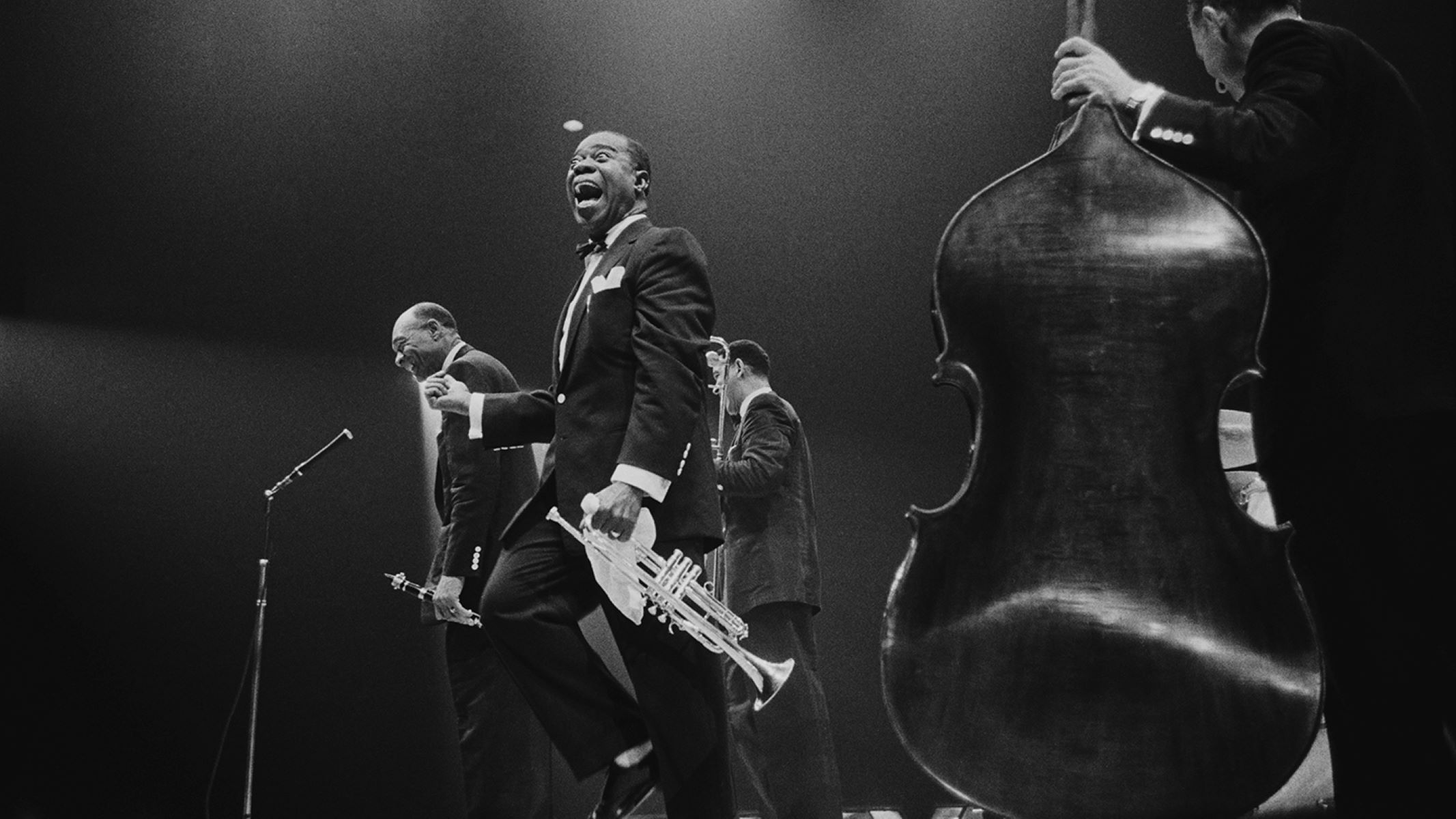

Jazz
What Are Jazz Standards
Modified: February 24, 2024
Learn about the captivating world of Jazz and its timeless standards. Explore the history, styles, and influences of Jazz music that have shaped its enduring legacy.
(Many of the links in this article redirect to a specific reviewed product. Your purchase of these products through affiliate links helps to generate commission for AudioLover.com, at no extra cost. Learn more)
Table of Contents
Introduction
Jazz, often referred to as America’s classical music, is a genre that emerged in the early 20th century and has since captivated audiences around the world with its improvisation, syncopation, and distinctive harmonies. At the heart of jazz, you will find a rich repertoire of songs known as jazz standards.
Jazz standards are timeless compositions that have become part of the core repertoire for jazz musicians. These songs serve as a shared language among musicians, allowing them to communicate, collaborate, and showcase their skills through improvisation. Jazz standards have not only shaped the jazz genre but also influenced other genres such as pop, rock, and R&B.
In this article, we will explore the definition, origins, characteristics, and importance of jazz standards. We will also delve into their evolution over time and highlight some of the most popular jazz standards. Lastly, we will discuss the enduring influence of jazz standards on other genres of music.
Definition of Jazz Standards
Jazz standards can be defined as a collection of musical compositions that have become a fundamental part of the jazz repertoire. These songs are known and recognized by jazz musicians, providing a common ground for improvisation and performance.
Unlike classical music, where the compositions are typically written by specific composers and performed as written, jazz standards are often interpreted and reimagined by different artists. This allows for a sense of spontaneity and creativity as musicians add their unique style and interpretation to the songs.
One characteristic of jazz standards is their versatility. They can be played in various styles such as swing, bebop, cool jazz, or even in a more contemporary fusion style. This adaptability allows jazz standards to remain relevant and appealing to different generations of musicians and listeners.
It is important to note that not all jazz compositions become standards. Jazz standards have stood the test of time and have gained recognition and acceptance within the jazz community. They are commonly performed and recorded by jazz musicians and are often considered the cornerstone of jazz performances.
Additionally, the term “jazz standard” can also refer to specific songs that have achieved a level of popularity and recognition beyond the jazz community. These songs may have been featured in movies, become part of the Great American Songbook, or have been widely recorded by musicians from various genres.
Overall, jazz standards are the foundation of the jazz repertoire, providing a common language for musicians to communicate and express themselves through improvisation. They serve as a bridge between generations of jazz artists and continue to inspire and influence musicians around the world.
Origins of Jazz Standards
The origins of jazz standards can be traced back to the early 20th century in the United States, specifically in the African-American communities of New Orleans and Chicago. During this time, jazz was still in its formative stages, blending elements of ragtime, blues, and African musical traditions.
Many early jazz standards were born out of the need for musicians to have a shared repertoire for jam sessions and performances. Musicians would often gather in clubs, speakeasies, and dance halls, where they would engage in spontaneous musical exchanges and improvisation. In order to maintain a cohesive musical dialogue, they would rely on a set list of well-known tunes, which eventually became the foundation of the jazz standards we know today.
The influence of early jazz pioneers like Louis Armstrong, Duke Ellington, and Jelly Roll Morton cannot be overstated when discussing the origins of jazz standards. These trailblazing musicians not only popularized the genre but also composed and recorded songs that would go on to become enduring jazz standards.
Another important factor in the development of jazz standards was the rise of the recording industry. With the advent of phonograph records, musicians had the opportunity to record and distribute their music to a wider audience. This allowed jazz standards to spread across the country and even internationally, ensuring their longevity and impact.
As the popularity of jazz grew in the 1920s and 1930s, musicians began to incorporate popular songs from other genres into their repertoire. Tin Pan Alley, a district in New York City known for its music publishers, became a source of inspiration for jazz musicians searching for new material to perform. Many of the songs published in Tin Pan Alley, initially intended for Broadway shows and popular singers, found new life as jazz standards when reinterpreted by jazz musicians.
With the passage of time, jazz standards not only drew inspiration from pop songs but also from other jazz compositions. Musicians began to compose original tunes that fit within the stylistic conventions of jazz, and these compositions eventually gained recognition and acceptance as jazz standards.
Overall, the origins of jazz standards can be attributed to the vibrant musical culture of early jazz communities, the influence of pioneering musicians, and the intersection of different musical genres during a time of significant artistic innovation.
Characteristics of Jazz Standards
Jazz standards possess distinct characteristics that set them apart from other genres of music. These characteristics contribute to their enduring appeal and make them a crucial part of the jazz repertoire. Here are some key features that define jazz standards:
- Memorable Melodies: Jazz standards are renowned for their captivating and memorable melodies. These melodies often follow a specific song form, such as AABA or ABAB, providing a structure that musicians can build upon during improvisation.
- Harmonic Complexity: Jazz standards frequently incorporate sophisticated harmonic progressions and chord changes. They may deviate from traditional diatonic harmony, incorporating extended chords, modulations, and chromaticism to create a rich and vibrant harmonic landscape.
- Opportunities for Improvisation: One of the defining characteristics of jazz standards is the space they provide for improvisation. Musicians take turns soloing over the chords and melodies, expressing their individuality and showcasing their improvisational skills.
- Rhythmic Flexibility: Jazz standards allow for rhythmic experimentation and flexibility. Musicians can vary the tempo, accentuate certain beats, and use syncopation to add rhythmic interest and complexity to their performances.
- Variety of Interpretations: Jazz standards lend themselves to interpretation and reinterpretation. Each musician or band can bring their own unique style, phrasing, and musical sensibilities, allowing for a wide range of interpretations of the same song.
Jazz standards are not static entities; they evolve and adapt over time. Musicians often introduce new arrangements, variations, and altered chord voicings to keep the songs fresh and exciting, while still staying true to the essence of the original composition.
Additionally, jazz standards often possess lyrical content that explores themes of love, loss, and the human experience. These lyrics can be a vehicle for storytelling and emotional expression, adding depth and meaning to the music.
Overall, the characteristics of jazz standards make them versatile, expressive, and timeless. They provide a framework for musicians to collaborate, communicate, and express their creativity, while also inviting listeners to immerse themselves in the artistry of jazz.
Importance of Jazz Standards
Jazz standards hold a significant place in the world of music and have profound importance for both musicians and listeners alike. Here are some key reasons why jazz standards are essential:
- Musical Education: Jazz standards serve as a valuable educational tool for aspiring musicians. They provide a foundation for learning jazz vocabulary, improvisation techniques, and the art of ensemble playing. Studying and performing jazz standards helps musicians develop their musical skills and understanding of the genre.
- Shared Language: Jazz standards act as a common language among musicians. They enable musicians from different backgrounds and generations to come together and communicate through improvisation. This shared repertoire creates a musical dialogue and fosters collaboration, making it easier for musicians to connect and perform together.
- Cultural Heritage: Jazz standards represent a significant part of America’s cultural heritage. They reflect the history, traditions, and struggles of the African-American communities who played a pivotal role in the development of jazz. Preserving and celebrating jazz standards helps to honor this heritage and appreciate the contributions made by the pioneers of the genre.
- Artistic Expression: Jazz standards provide a platform for musicians to express their unique artistic voice. Through improvisation, musicians can add their personal touch, creativity, and interpretation to these songs. Jazz standards encourage musicians to push the boundaries, experiment, and showcase their individuality as performers.
- Live Performances: Jazz standards are frequently performed in live settings, such as jazz clubs and festivals. These performances create an intimate and interactive experience between the musicians and the audience, fostering a sense of community and connection. Jazz standards have the power to captivate and engage listeners, evoking emotions and leaving a lasting impression.
Furthermore, the importance of jazz standards extends beyond the jazz community. Many jazz standards have crossed over into popular culture and have been embraced by audiences of various genres. They have been featured in movies, commercials, and covered by artists from different musical backgrounds, solidifying their lasting impact and relevance.
In essence, jazz standards play a crucial role in preserving the legacy of jazz, providing a common ground for musicians, and offering a rich and immersive musical experience for listeners. They serve as a testament to the versatility, creativity, and enduring nature of jazz as an art form.
Evolution of Jazz Standards
The evolution of jazz standards is a testament to the ever-changing nature of music and the creativity of jazz musicians. Over time, these songs have undergone transformations, adaptations, and reinterpretations, reflecting the evolution of jazz itself. Here’s a look at the key factors that have contributed to the evolution of jazz standards:
- Reinterpretation by Jazz Legends: Jazz standards have been reimagined and reinterpreted by legendary musicians throughout history. Artists like Miles Davis, John Coltrane, and Ella Fitzgerald have put their unique stamp on many classic standards, pushing the boundaries of the genre and introducing fresh perspectives.
- Musical Innovations: As jazz evolved, new musical innovations emerged, leading to the development of subgenres such as bebop, cool jazz, and fusion. Jazz standards were adapted to fit these styles, incorporating complex harmony, intricate rhythms, and avant-garde elements. This experimentation and fusion of styles have contributed to the evolution of jazz standards.
- Arrangement Techniques: Jazz musicians have used various arrangement techniques to transform familiar jazz standards. These techniques include reharmonization, rhythmic alterations, melodic variations, and interpretive phrasing. These creative arrangements have breathed new life into the songs and allowed for continuous exploration and reinvention.
- Cross-Genre Influences: Jazz standards have not only influenced other genres but have also been influenced by them. Musicians have drawn inspiration from blues, rock, Latin, and other genres, infusing these elements into their interpretations of jazz standards. This cross-pollination of musical ideas has contributed to the growth and expansion of the jazz standards repertoire.
- Contemporary Adaptations: Jazz standards continue to evolve in contemporary times. Musicians today are incorporating elements of hip-hop, electronic music, and other modern genres into their interpretations, giving a fresh perspective to these timeless compositions. The ongoing evolution of jazz itself ensures that jazz standards remain relevant and adaptable to current musical trends.
The digital age has also played a role in the evolution of jazz standards. With the advent of streaming platforms and online communities, musicians have greater access to recordings, transcriptions, and educational resources. This accessibility has facilitated the sharing of ideas and approaches, allowing for even more diverse interpretations and experimentation with jazz standards.
Despite the evolution of jazz standards, there remains a strong respect for the tradition and history associated with these songs. While artists may take creative liberties, they often maintain a connection to the original compositions, paying homage to the rich legacy of jazz.
Ultimately, the evolution of jazz standards is a testament to the adaptability, innovation, and artistic growth within the genre. As jazz evolves, so will the interpretations of these beloved compositions, keeping the jazz standards repertoire alive and thriving.
Popular Jazz Standards
When it comes to popular jazz standards, there are numerous timeless compositions that have become staples in the jazz repertoire. These songs are celebrated for their captivating melodies, evocative lyrics, and enduring appeal. Here are just a few examples of popular jazz standards:
- Summertime: This hauntingly beautiful ballad from the opera “Porgy and Bess” by George Gershwin has become one of the most recorded jazz standards of all time. Its memorable melody and expressive lyrics make it a perennial favorite among jazz musicians and audiences.
- Take the A Train: Composed by Billy Strayhorn and made famous by the Duke Ellington Orchestra, this swinging tune is an iconic representation of the big band era. Its catchy melody and infectious rhythm embody the spirit of jazz and have made it a beloved jazz standard.
- Autumn Leaves: Originating from a French popular song, “Les Feuilles Mortes,” this melancholic tune has been embraced by jazz musicians around the world. Its emotive melody and introspective lyrics lend themselves to expressive interpretations and improvisation.
- All of Me: With its infectiously joyful melody, this Jazz Age classic has become a beloved jazz standard. Written by Gerald Marks and Seymour Simons, it has been performed by countless jazz musicians and remains a favorite for its playful and spirited nature.
- Blue Bossa: Composed by Kenny Dorham, this Latin-infused jazz standard combines elements of bossa nova and hard bop. With its infectious groove and smooth melody, Blue Bossa has become a favorite among jazz musicians for its versatility and rhythmic appeal.
- My Funny Valentine: This beautiful ballad by Richard Rodgers and Lorenz Hart has captivated artists and listeners with its tender lyrics and enchanting melody. Its timeless quality has made it a popular choice for jazz vocalists, allowing them to showcase their interpretation and emotional depth.
These are just a few examples from a vast library of jazz standards. Other popular jazz standards include “Fly Me to the Moon,” “Stella by Starlight,” “A Night in Tunisia,” “So What,” and “In a Sentimental Mood,” among many others. Each of these songs holds a special place in the jazz canon and continues to inspire musicians to explore and express their musical artistry.
It’s worth mentioning that the popularity of jazz standards can vary over time and evolve as new compositions enter the jazz lexicon. However, the enduring appeal and recognition of these classics ensure that they remain firmly established in the repertoire of jazz musicians and continue to be cherished by audiences around the world.
Influence of Jazz Standards in Other Genres
The influence of jazz standards extends far beyond the jazz genre itself. These timeless compositions have made a significant impact on various other genres of music, influencing artists and shaping the course of musical history. Here are some examples of how jazz standards have left their mark:
- Pop Music: Many jazz standards have crossed over into the realm of popular music. Artists like Frank Sinatra, Ella Fitzgerald, and Tony Bennett have popularized jazz standards, introducing them to a wider audience. Songs like “Fly Me to the Moon,” “The Way You Look Tonight,” and “My Funny Valentine” have become beloved classics in the pop music world.
- R&B and Soul: The soulful and emotive nature of jazz standards has served as a foundation for R&B and soul music. Artists like Ray Charles, Aretha Franklin, and Stevie Wonder have incorporated jazz elements into their music, often reimagining jazz standards with their own unique flair and vocal style.
- Film Soundtracks: Jazz standards have frequently been featured in film soundtracks, enhancing the mood and atmosphere of movies. Songs like “Moon River” from Breakfast at Tiffany’s and “As Time Goes By” from Casablanca have become iconic movie themes, ingrained in the collective consciousness of film enthusiasts.
- Broadway and Musical Theater: Several jazz standards have found their way into Broadway shows and musical theater productions. Composers and lyricists draw on the emotional depth and storytelling qualities of jazz standards, incorporating them into their stage productions. Songs like “Summertime” from Porgy and Bess and “My Favorite Things” from The Sound of Music are examples of how jazz standards have become integral to the theater world.
- Contemporary and Alternative Music: Jazz standards have also influenced modern and alternative music genres. Artists like Amy Winehouse, Norah Jones, and Jamie Cullum have drawn inspiration from jazz standards, incorporating elements of jazz into their own unique sound, creating a fusion of genres.
This cross-pollination of jazz with other genres demonstrates the enduring appeal and versatility of jazz standards. Their melodic richness, harmonic complexity, and emotional depth provide a foundation for artists to draw from, allowing for diverse interpretations and reinventions.
The influence of jazz standards in other genres not only showcases the timeless nature of these compositions but also pays homage to the rich history and artistry of jazz. It underscores the impact that jazz as a genre has had on the broader musical landscape, continuing to inspire and shape the work of artists in numerous genres.
Conclusion
Jazz standards have become an integral part of the musical fabric, influencing and captivating audiences across genres and generations. With their memorable melodies, intricate harmonies, and opportunities for improvisation, jazz standards serve as a shared language for musicians to communicate and express themselves.
From their origins in early jazz communities to their widespread influence in popular music, jazz standards have stood the test of time and continue to evolve. They provide a foundation for musical education and serve as a cultural heritage, representing the rich history and contributions of African-American artists to the genre.
The enduring popularity of jazz standards can be attributed to their characteristics – memorable melodies, harmonic complexity, opportunities for improvisation, rhythmic flexibility, and a variety of interpretations. These qualities have ensured their relevance and adaptability, allowing jazz standards to resonate with audiences of all backgrounds.
Moreover, jazz standards have extended their influence beyond the jazz genre, leaving an indelible mark on pop music, R&B, film soundtracks, Broadway, and contemporary music. Their impact can be felt in the work of artists and the rich musical tapestry of various genres.
In conclusion, jazz standards hold a special place in the world of music. They serve as a catalyst for artistic expression, a bridge between musicians, and a source of inspiration for audiences. Jazz standards embody the essence of jazz – creativity, collaboration, and the celebration of individuality. As they continue to evolve and inspire new generations of musicians, jazz standards remain a testament to the enduring beauty and cultural significance of jazz as a genre.











